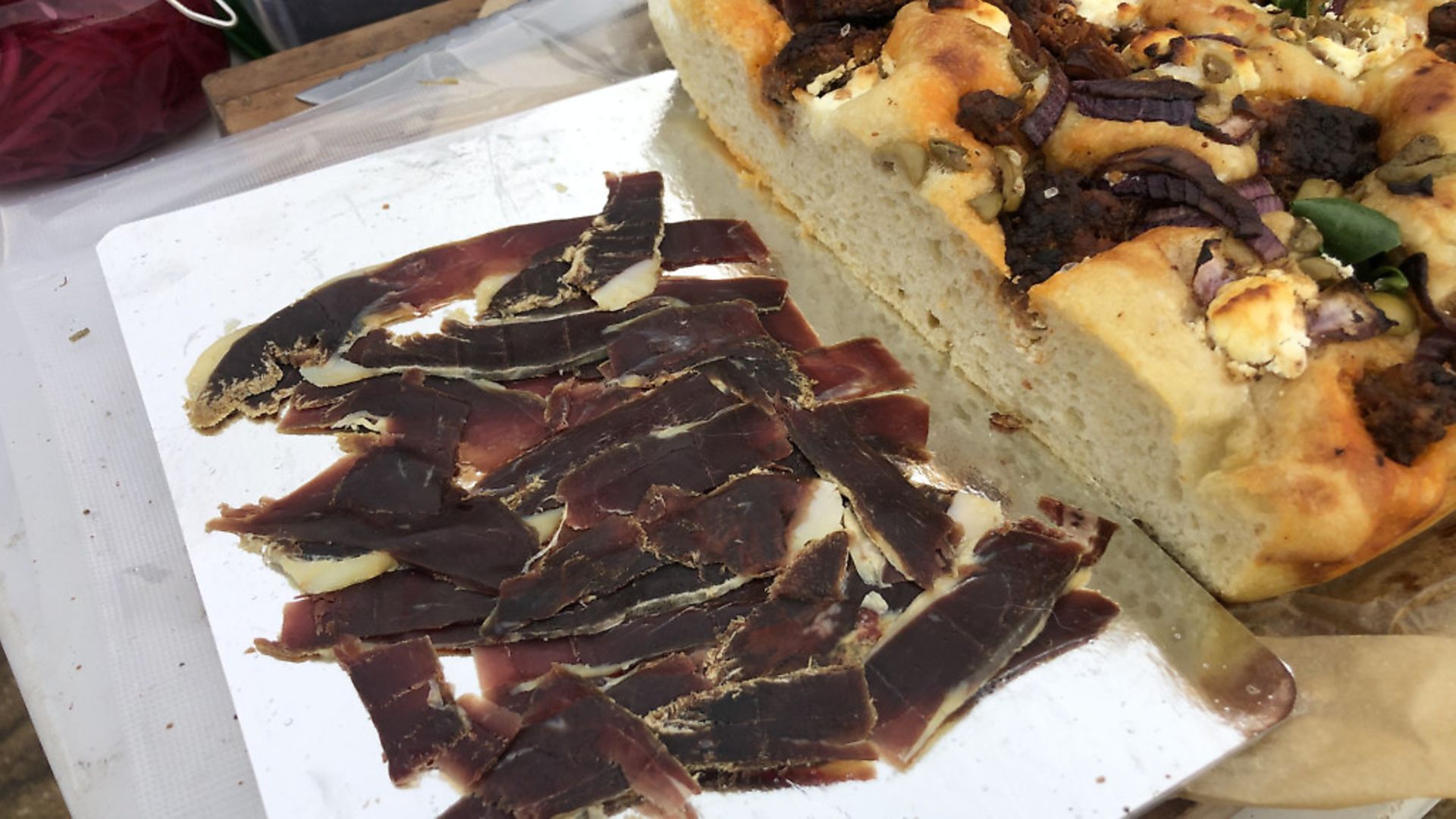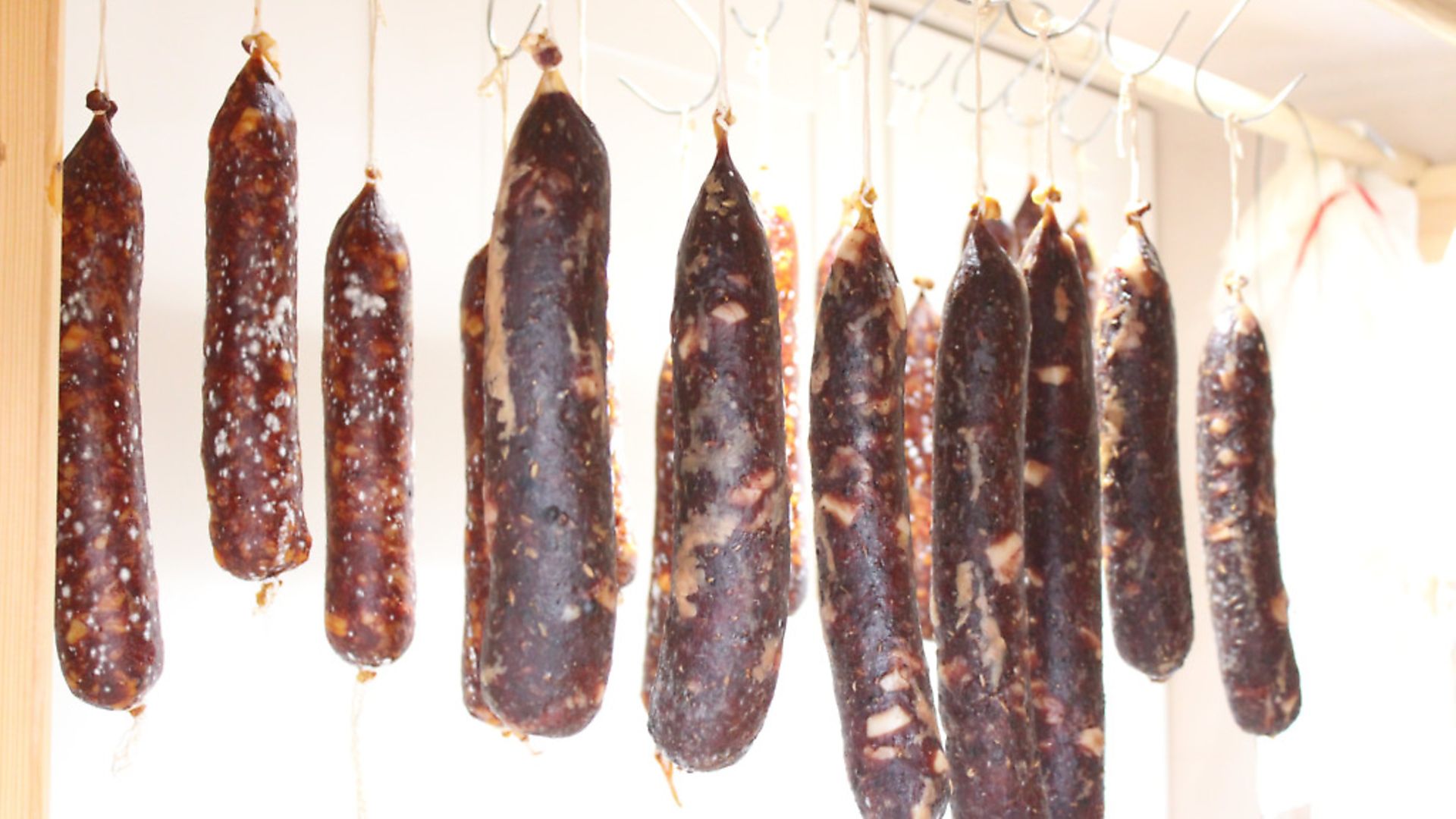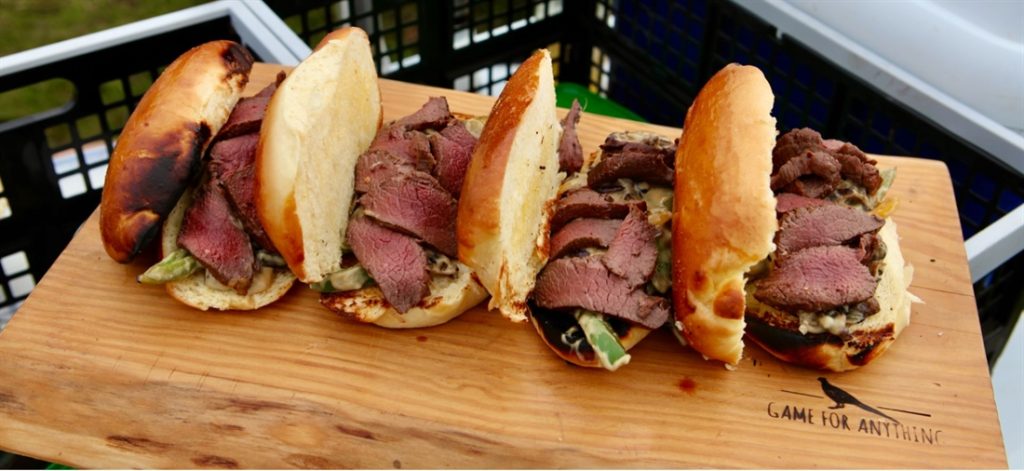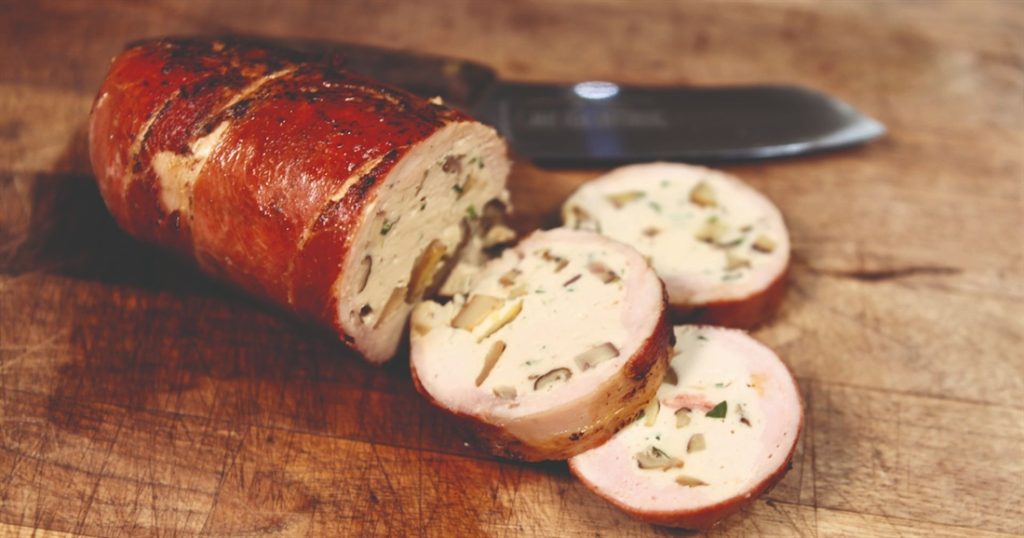Recipe: Venison prosciutto & pheasant salami
Gamey takes on two classic cured meat dishes - what could be better on your charcuterie board than venison prosciutto and pheasant salami!?
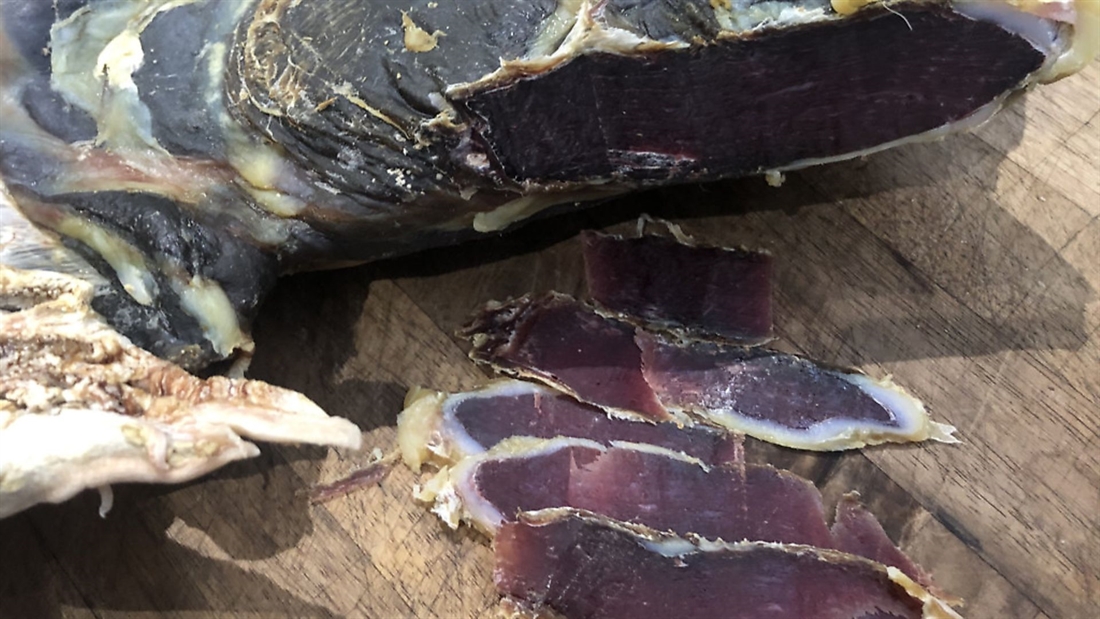
The Game for Anything crew present two delicious cured meat recipes for you to try at home, with no special kit needed!
As we have often talked about, at Game for Anything we are always trying to find new ways to use game – and one of our favourite ways is in charcuterie.
Sometimes, the idea of making charcuterie can feel a bit scary, as you are not cooking the meat, just allowing it to dry and cure. Due to the fact that there is a plentiful, inexpensive supply of game meat throughout the year, we encourage you to give it a go and if it does goes wrong, you’re not too much out of pocket.
Even here in the GFA kitchen, we have had some attempts that have not been successful. Best advice is to trust your nose. If it doesn’t smell right, don’t eat it.
Venison Prosciutto
Ingredients
- 2-3kg haunch of roe deer
- 10kg PDV curing salt
- 20ml malt vinegar
Method
1. Trim any loose bits of fat and flesh off the venison
2. Weigh the haunch
3. Using a wooden or plastic box, pour in about 4cm of PDV curing salt (this can be bought on Amazon.co.uk, but I would recommend popping to your local Chinese supermarket as it is usually really cheap there)
4. Lay the haunch on top of the salt, and arrange it so there is at least a 4cm gap from the edges of the box
5. Pour over more PDV salt to completely cover and ensure there is about 4cm covering the top of the joint
6. Place the box in a cool, dark place
7. Lay a wooden board on top of the salt and then put a heavy weight on top of that (spare bag of salt is perfect for this)
8. It should be left in the salt for three days per kg (i.e. 3kg leave for nine days)
9. At the end of the cure, remove the haunch and dispose of the salt
10. Rinse off with cold water and pat dry with a teatowel
11. Weigh again at this stage
12. Using a cloth, rub the whole joint with malt vinegar
13. Now place the joint in a muslin or jambon bag; this is to keep flies off, so not so important during winter
14. Place the haunch on a meat hook in a cool place, out of direct sunlight where there is air movement
Tip. The air movement is the important part so if you have a garage or shed where you can leave a window and door open this will work well
15. Don’t allow the temperature to get over 23°C
16. Leave for 2-3 months (the target is to lose 30% of the weight after it comes out of the salt, i.e. 3kg after curing should be 2.1kg finished weight)
Pheasant Salami (makes 10)
Ingredients
- 2kg minced pheasant breast and leg meat
- 1kg minced pork belly ensuring the rind has been removed AND 500g pork back fat in 1cm cubes (this can be bought from your local butcher)
- 20g fennel seeds
- 2 cloves of garlic
- Beef middle casings (these can be purchased online)
- 50g cracked black pepper
- 60g PDV curing salt
- 150ml port
Method
1. Wash the salt thoroughly off the beef casings
2. Place in warm water for three to four hours before you are ready
3. Lightly toast the fennel seeds in a dry frying pan
4. Crush the garlic clove
5. Place all the ingredients into a larger mixing bowl and work together with your hands
6. Load the mix into the sausage filler and then place beef casings on the filling nozzle
7. Feed out some of the meat mixture then tie a piece of string around the beef casing, flip over the end of the beef casing and tie a second knot over the top of this (use the string to form a loop that can be used to hang later)
8. Feed out the sausage meat to form a salami about 20-25cm long
9. Pull forward to give some spare casing
10. Cut the casing and tie off at the bottom of the salami, flip over the casting again and tie a second knot
11. Repeat until all the meat is used
12. They should initially be hung somewhere about 20-25°C for 24 hours for the skins to harden and bacteria to form
13. After that, hang them out of direct sunlight but with air movement
14. You are looking for a temperature of 12-18°C and humidity of about 70%
15. Hang for about 6-8 weeks




